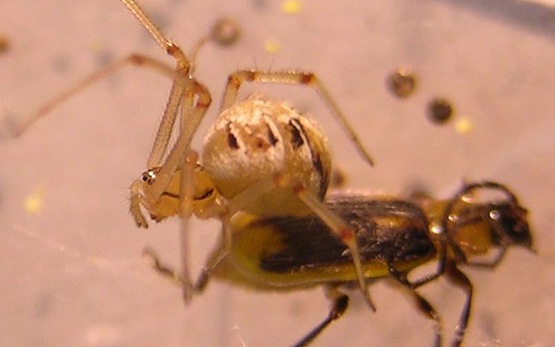
Insect-resistant transgenic plants are grown in many countries worldwide. They produce insecticidal proteins that protect them against the main insect pests. But what about beneficial species?
So-called Bt plants produce one or more proteins from the bacterium Bacillus thuringiensis (Bt) that provide protection against being eaten by caterpillars (e.g. the European corn borer) or beetle larvae (corn rootworms). Since the start of the cultivation of Bt plants in 1996, Agroscope has been researching the potential risks of Bt plants for beneficial arthropods. Our work focuses on predators and parasitoids which contribute to biological pest control and are thus crucial for sustainable agriculture.
For risk assessment, it is important to know how much of the protein is ingested by a beneficial species (exposure), and how sensitive the species is to the protein (hazard). In addition to potential direct effects caused by ingestion of the Bt protein, indirect effects may emerge in the food chain owing to changes in the nutritional quality of sub-lethally damaged prey species.
For over twenty years, Agroscope researchers have been studying and evaluating the possible effects of genetically modified Bt crops on biodiversity, and especially on beneficials that play a role in the biological control of pests.
In a 2018-published review article, co-authored with American colleagues, Agroscope researchers point out that today’s Bt plants do not endanger beneficials. Rather, they actually support them in those cases where they help to reduce the use of chemical synthetic insecticides.
Contact
Financial support





